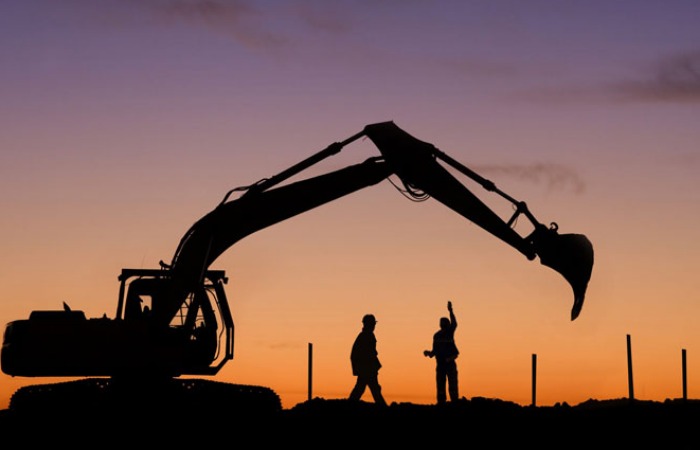
Demand diversity in CE sector
Demand within the global construction equipment manufacturing industry is anything but homogenous, with certain countries and sales regions significantly outperforming others, with a whole host of factors fuelling and suppressing each key market.
Of the key regional sales markets, Europe is showing steady signs of growth, with the UK, in particular, enjoying strong sales numbers. Contrasting the US, China, the nation with the world’s biggest demand for construction equipment, has seen domestic sales dip, with many firms now looking to up their percentage of exports against total machine sales.
However, the Asia-Pacific region, with China at the forefront, is still the key region for aggregate demand due to its huge government-led investment in new transport and other vital infrastructure. In fact, leading independent research tips the region’s share of overall global aggregates demand to grow over the next two years. Such a big demand for aggregates tends to go hand in hand with big demand for construction equipment.
The latest construction equipment unit sales forecast from an international construction equipment industry management consultancy offers a positive perspective. Along with Asia-Pacific, respected industry analysts such as OHR, along with national construction-minded associations, are tipping markets such as Africa and parts of South America, especially Brazil, to continue to prosper as governments and private investors continue to invest big money on new public infrastructure works.
The construction equipment market in North America has been riding a strong economy over the past few years. The segment was due for a slowdown; however, current worldwide economic conditions have caused a rapid cycle to reset in the construction industry. Government is committed to support the demand in the sector by investing heavily into infrastructure. We have yet to see any new level of demand, but we expect to see signs of the new normal in the second half of 2020 and early 2021.
Many of the future infrastructure bills moved to the back burner in favour of help for small businesses. However, infrastructure is a silver lining in the pandemic for many States. With the lockdowns in place in most States during 2020 and reduced vehicle traffic, crews continued their road work and were getting more work done than usual.
During the economic shut down, construction remained one relatively bright spot, since it was declared “essential” by federal and state officials. U.S. government officials signaled that they are looking to steer even more money to infrastructure projects to help the economy recover from the damage caused by the pandemic, but we have not seen any specific moves in this direction
Supporters of spending on infrastructure and transportation believe this could help put people to work with dollars guaranteed to be spent inside the United States, while tackling a backlog in maintenance work that acts as a drag on the economy.
The most recent North American construction equipment projection on production shows a decline of 14.2 per cent in 2020 when compared to 2019 volumes. While forecasting a double-digit decline in 2020, we remain rather optimistic on the mid-term view (2021-2023). We expect the market segment to post a growth rate in 2021 of 4.2 per cent when compared to 2020 and an additional increase of 6.5 per cent in 2022.
When the coronavirus arrived late last year, it profoundly affected most industries, geographies and populations. It has forced most of us to evaluate our established norms and to make changes moving forward.
For equipment and vehicle OEMs, powertrain providers and other component suppliers, surviving the current situation and emerging stronger than before this crisis will require new thinking and strategies. The speed and flexibility in adopting new standards and operations differentiate winners from losers.
The COVID-19 global pandemic has made this year very challenging across most industries. This includes the production of agricultural (AG) machinery, construction equipment and industrial products in North America. The off-highway segments (agricultural, construction and industrial) are all seeing dramatic production declines in 2020 compared to 2019.
Demand for products in most markets and regions has been weak and will not return to normal in the short term; we have already witnessed this during Q2 2020. This is especially true even for the industries that suffered the least impact in supply chain disruption and manufacturing shutdowns.
February 2020 marked the end of the longest economic expansion in U.S. history, a stretch of 10 years and 8 months, according to the National Bureau for Economic Research. The U.S. economy was due for a slowdown, but the pandemic dramatically sped up the end of the current cycle.
The last few years have been challenging for the agricultural and farming industry in North America. It suffered multiple setbacks in 2019, driven by weather, low commodity rates and trade disputes. Power Systems Research’s latest numbers indicate that the agricultural machinery market declined 3.7 per cent in 2019 versus 2018, and we had forecast a recovery to start in 2020.
However, that projected recovery has been postponed and put on hold again, due to the slumping world economy caused by COVID-19.
Currently, we expect the AG segment to follow other industrial and heavy equipment industries. In 2020, we project a decline of 12.5 per cent when compared to 2019. A small recovery is projected for 2021 at 4.4 per cent.
The segment decline rate in 2020 is low double digits, based mainly on already low-level production that took place during 2016-2019. Thus, we will not see 25-30 per cent declines in the AG sector as we witnessed in other market segments. We expect that further changes are due to supply chain channels and ultimate rebalancing of market shares among industry players. The recovery will be slow and steady, but we expect levels of production in 2022 to reach those of 2016-2017.
Courtesy: Construction Equipment
Analysis


 +91-22-24193000
+91-22-24193000 Subscriber@ASAPPinfoGlobal.com
Subscriber@ASAPPinfoGlobal.com